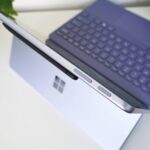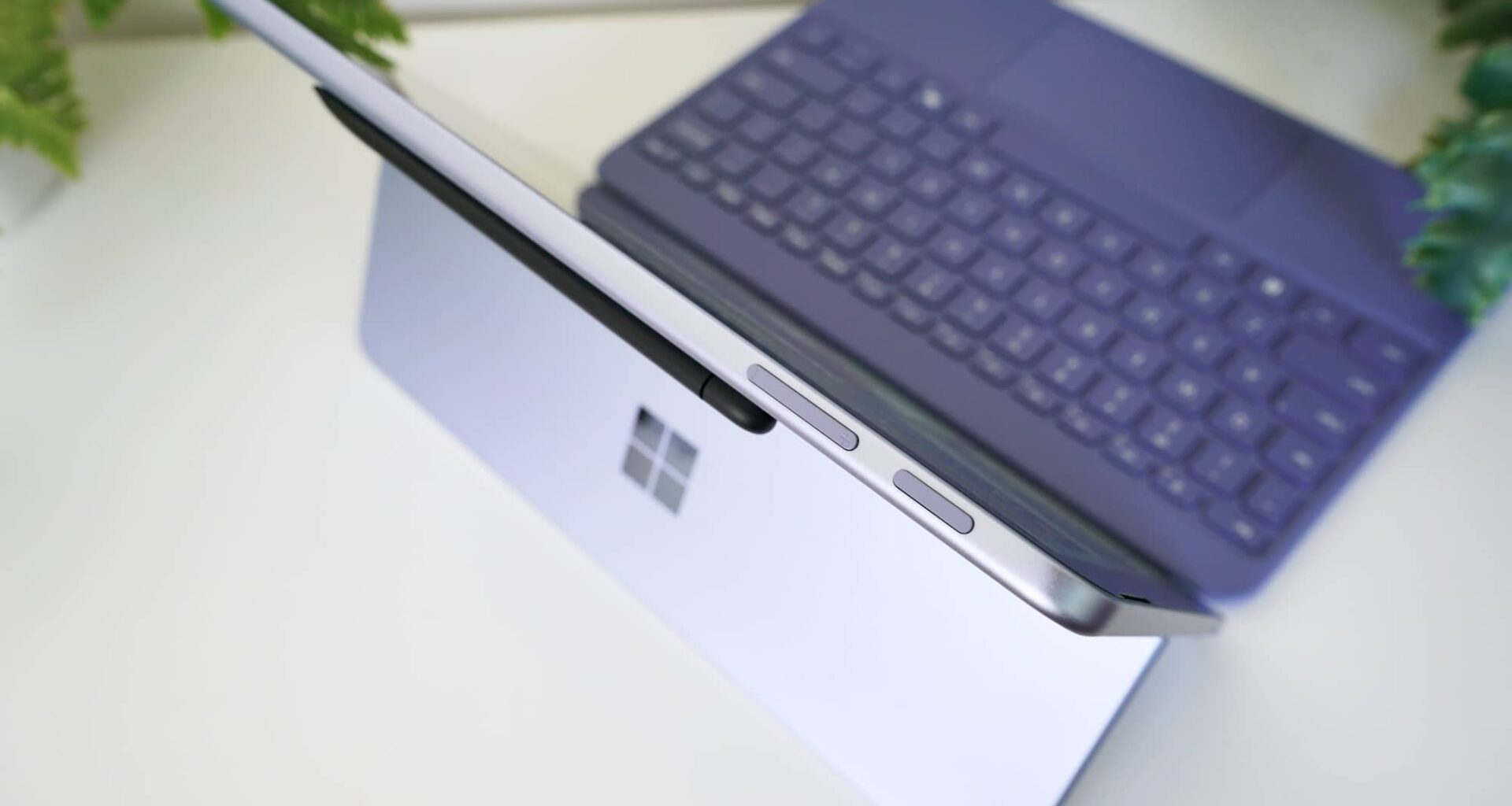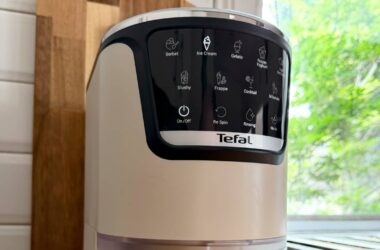Quick review
The good
The not-so-good
How portable can a Windows laptop be? Provided you don’t mind spending up on necessary accessories, the 12 inch Surface Pro makes productivity to go a cinch.
Laptops can come in all sorts of shapes and sizes, but small laptops are becoming a bit of a thing of the past. Much like how small phones more or less don’t exist, replaced by large devices with large batteries, small laptops have seemingly disappeared, replaced by tablets, and they’re just not the same.
Improvements in operating system have helped make both tablets like the iPad stand out for productivity, and iPadOS 26 is clearly going to push Apple’s tablet in the right direction for work, but if you are looking for a truly compact laptop, you won’t find many out there to suit you.
The days of the 10 to 12 inch laptop are gone. The era of the netbook and the sub-notebook seem to have disappeared, rather like the compact phone.
If you want a properly portable work machine, you’re probably going to have to settle on a 13 inch laptop or a tablet with some compromises. That’s all there is to it.
Or is it?
Microsoft could be bringing the idea back, launching a 12 inch take on its Surface Pro, a machine that delivers the style of a tablet with the tech of an actual computer. There’s no special version of Windows here; just a full version of Windows, a mobile processor, and the compatibility with apps you want from a regular laptop.
The Surface Pro 12 inch is a portable Surface. As portable as the range has been for a while, possibly since the discontinuation of the 10.1 inch Surface Go years ago. Is the Surface Pro 12 a success, or does it need a little more work to be perfect?
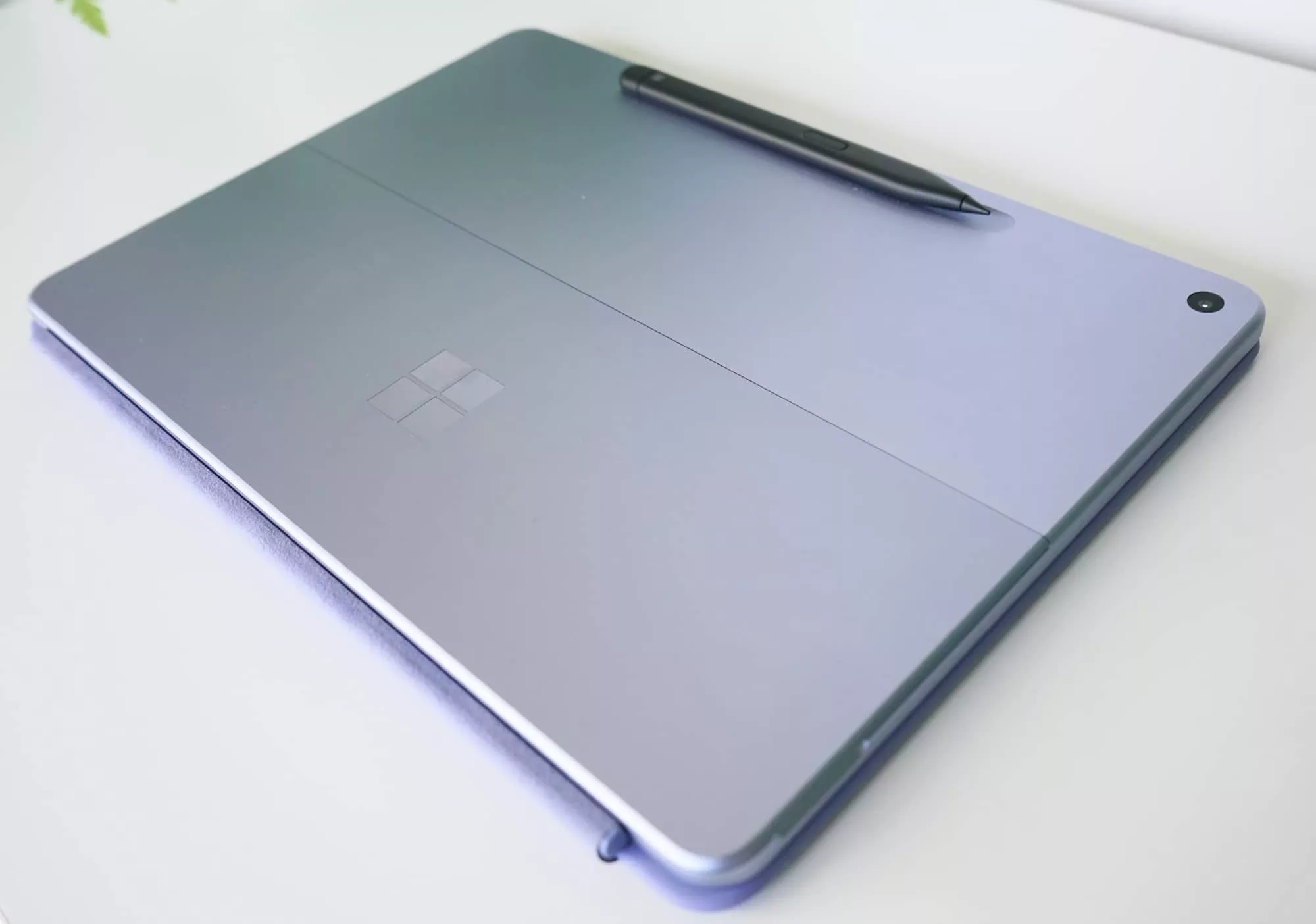
Design
Think of this new generation of the Surface as something a little bit different, but also entirely familiar. It’s a little smaller, sure, but Microsoft has kept the slanted edges, softening them that little bit more while retaining an aluminium casing.
Sitting somewhere between laptop and tablet — it’s both, but mostly a tablet with the ability to work as a laptop — the Surface Pro 12 inch is fairly light, providing a full Windows experience from 686 grams in a device measuring 7.8mm thick.
Our Surface Pro 12 colour sat somewhere between a metallic purple and blue — Microsoft calls it violet — and was definitely pleasing to the eye, as was the kickstand, which Microsoft has kept around. That’s been a feature of the Surface ever since the range launched back in 2012.
Unlike how the iPad keyboard cover works — where you have a couple of angles to choose from — Microsoft’s Surface Pro uses a vari-angle stand that can see the Surface Pro resting at nearly angle. Upright, at an angle, leaning back, and near flat. It’s your choice, and it is lovely to see this in a smaller design.
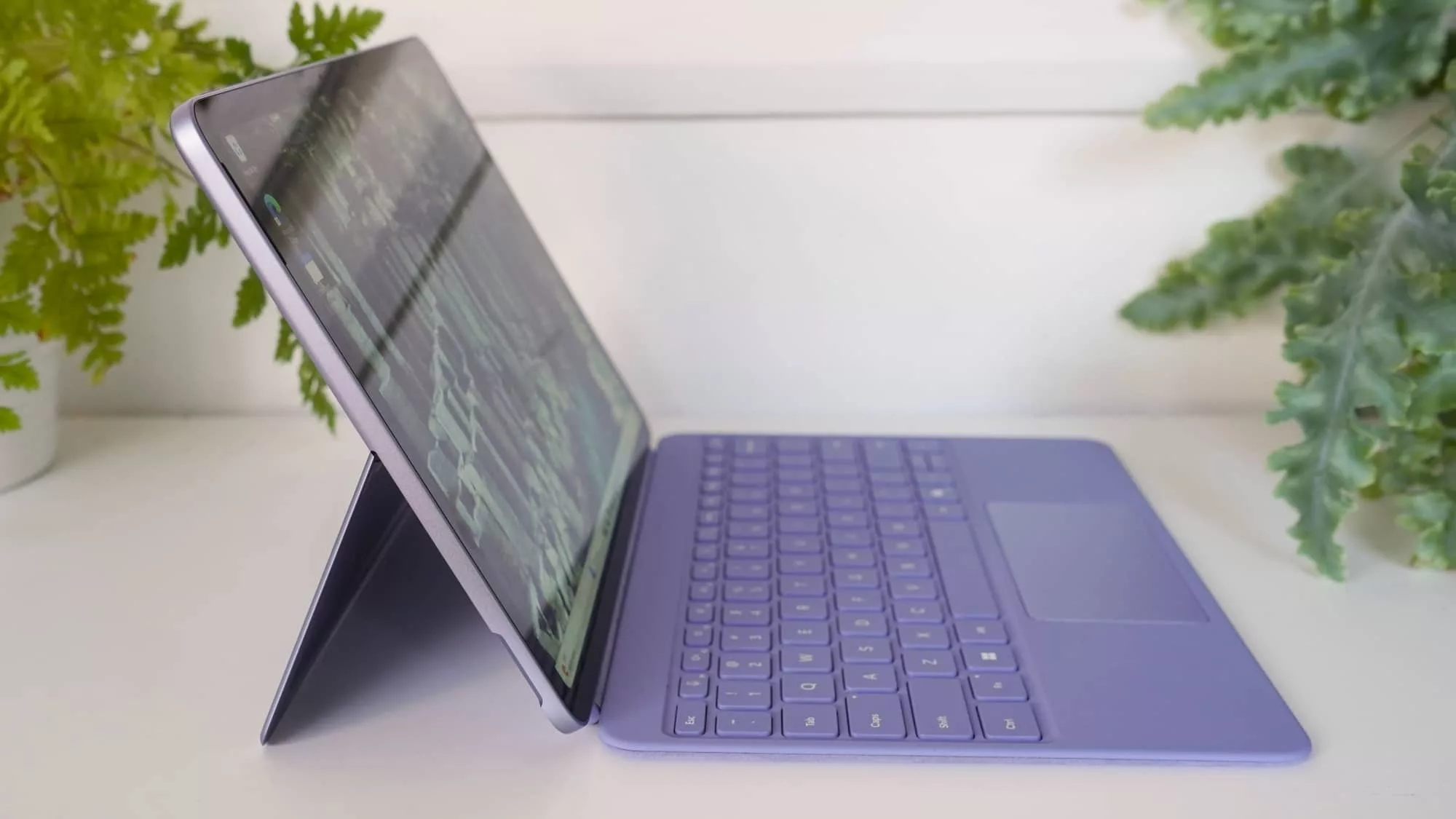
Features
A slight revamp on the Surface Pro formula sets up the 12 inch edition, which is now a little bit smaller, a little more curved, and a lot more in line with the sort of ports we expect in computers today.
Inside, though, the tech is largely what you can expect from a laptop, because that’s always what the Surface line has been: a laptop designed like a tablet with an optional keyboard (that probably shouldn’t be optional at all).
But instead of the usual chips from Intel or AMD, Microsoft is using a Qualcomm Snapdragon X Plus, a variant on the Snapdragon X chips we’ve seen in the past. An eight-core processor, this one is a newbie, paired with a minimum of 16GB RAM and as little as 256GB storage or as much as 512GB, with no microSD to expand on things.
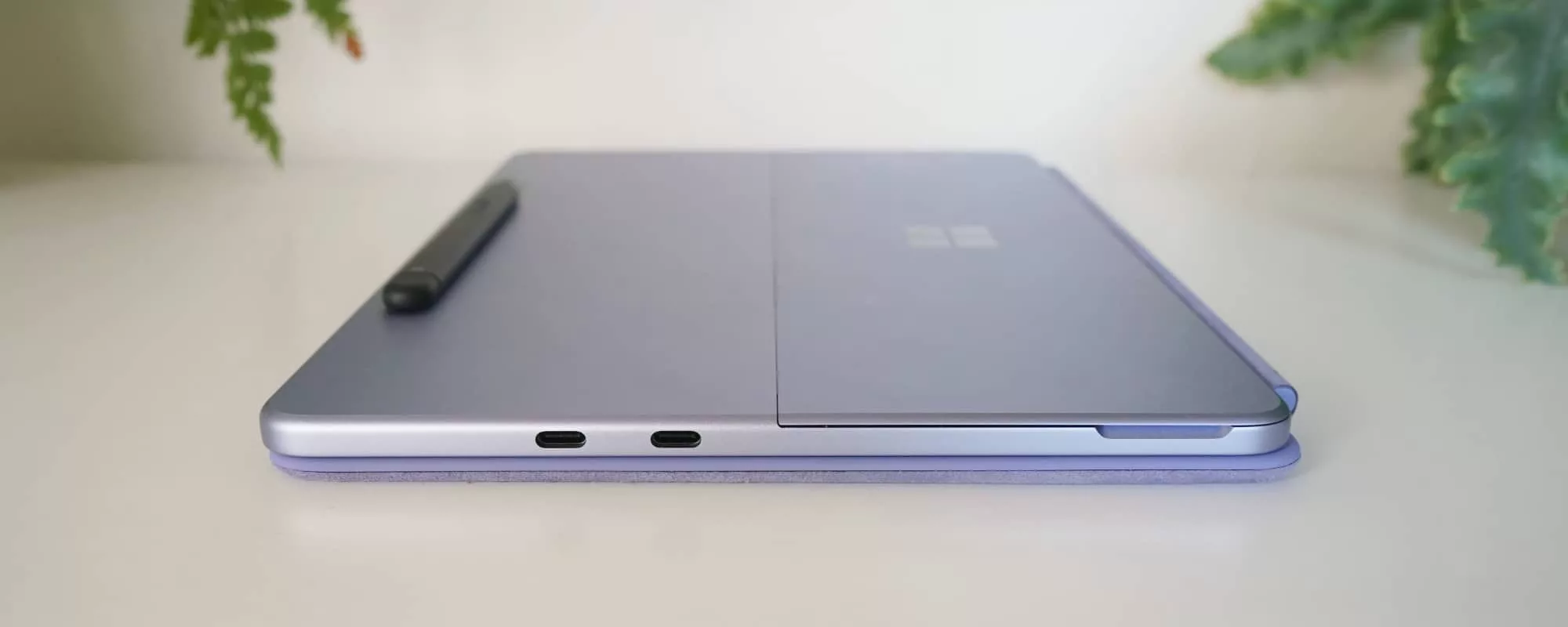
There are only a handful of ports to work with, offering only two USB-C ports with support for USB 3.2, and not even a 3.5mm headset jack or Thunderbolt connection. Interestingly, there’s no Surface Connect port, which surprised this reviewer greatly. This is definitely made for a different type of Surface buyer.
At least wireless hasn’t been cut back, with Microsoft supporting WiFi 7 and Bluetooth 5.4. As expected, Windows 11 Home arrives on the Surface Pro 12 out of the box.
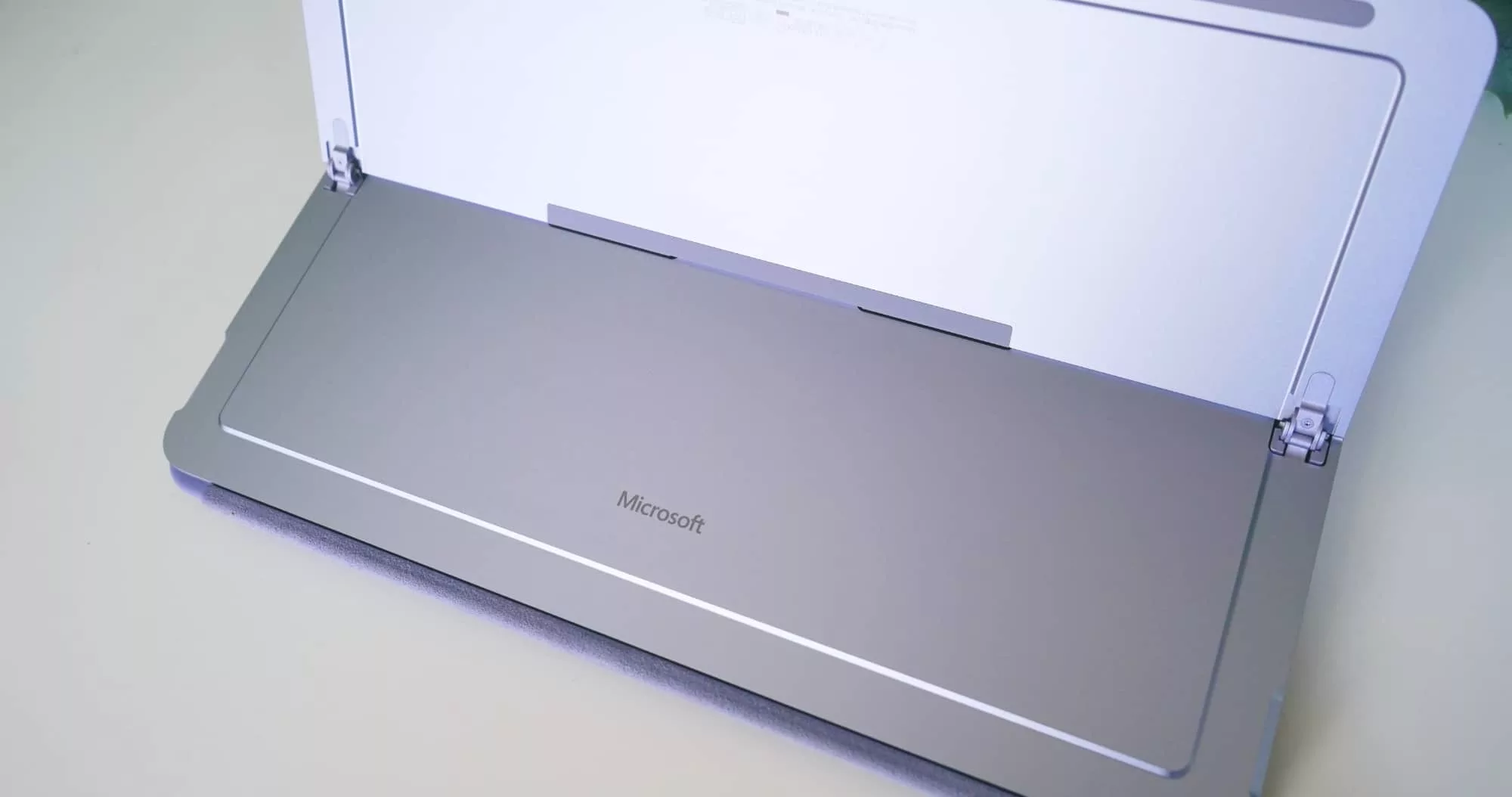
Display
The big new feature is actually the screen, with the 12 inch model different from its 13 inch sibling by a whole inch (!), and yet coming with a very different resolution.
On its 13 inch big brother, you’ll find a 2880×1920 display and up to a 120Hz refresh rate. Slick.
By comparison, the 12 inch Surface Pro loses an inch, as well as some resolution and refresh rate. Instead, you’ll find a less known resolution of 2196×1464 here, plus a slightly slower refresh rate of 90Hz.
That change won’t mean a lot to everyone, because the screen here still looks good. The display is crisp, the visuals clear, and while you miss out on the vibrant colours and perfect black of an OLED panel — something the 13 inch can be equipped with — it’s not a bad screen at all.

It’s just not as fast, which hopefully won’t make too much of a difference.
The tablet is definitely smaller, though, making it an easy grab for portability. Twelve inch laptops are rare these days, and yet the Surface Pro 12 inch is just that: properly portable.
In-use
Using this properly portable device comes in two varieties: tablet only and as a laptop.
Opting for the former, you’ll have to get by with a touchscreen keyboard, and the experience isn’t totally amazing. Microsoft has moved away from a touch-focused operating system, and while Windows works with touch, the icons and style aren’t huge like they might be when built specifically for touch.
In short, you’ll want the optional extra that is the keyboard, and may want the Slim Pen stylus that comes with one of the keyboard options.
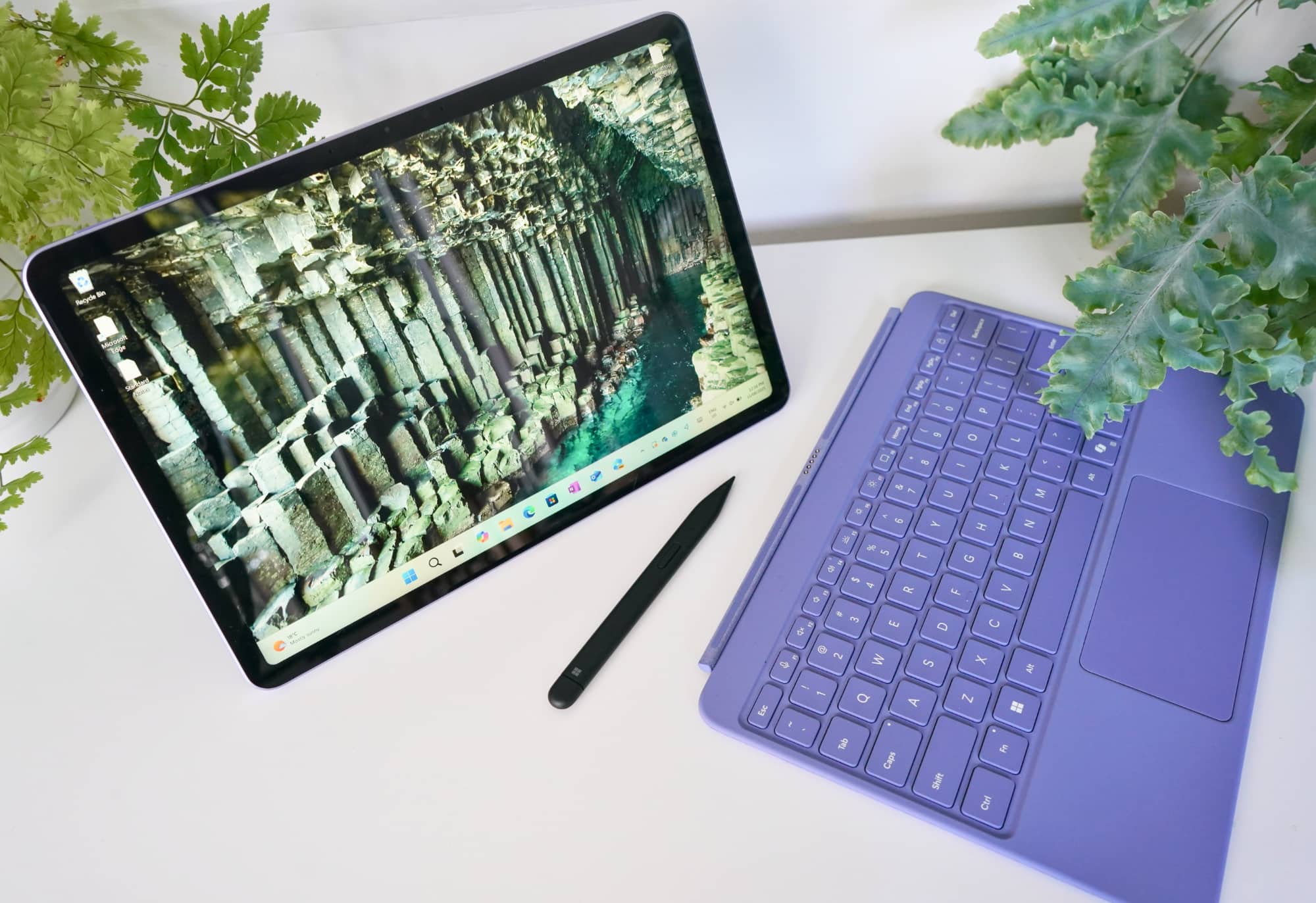
Microsoft’s Type Cover
The keyboard cover built into a plush fabric back isn’t a new peripheral for the Surface, either. This is just a slightly smaller variation on the theme.
You’ll find a little bit of backlighting in this variation, and a fairly comfortable travel for typing. It’s not too soft and easy to type on, so much that this review was mostly written on it.
Our only hope is that the keyboard survives more than 200,000 keystrokes, as not every TypeCover has been so lucky over the years.
The Surface Slim Pen
An optional extra, the Surface Slim Pen gives you a way to write, draw, and scribble on your Surface using a stylus that clings to the back of the tablet with lovely strong magnets.
The design is actually clever, matching the back with a hint of thickness that doesn’t affect the design or how you hold a pen too dramatically. You can even quick launch your favourite app by double clicking the button at the back of the pen, almost like you were clicking the pen’s tip in and out.
That stylus is handy, even though it’s an optional extra, and its flat design feels better than we expected. The fact that it magnetically mounts is a bonus. It holds nicely.
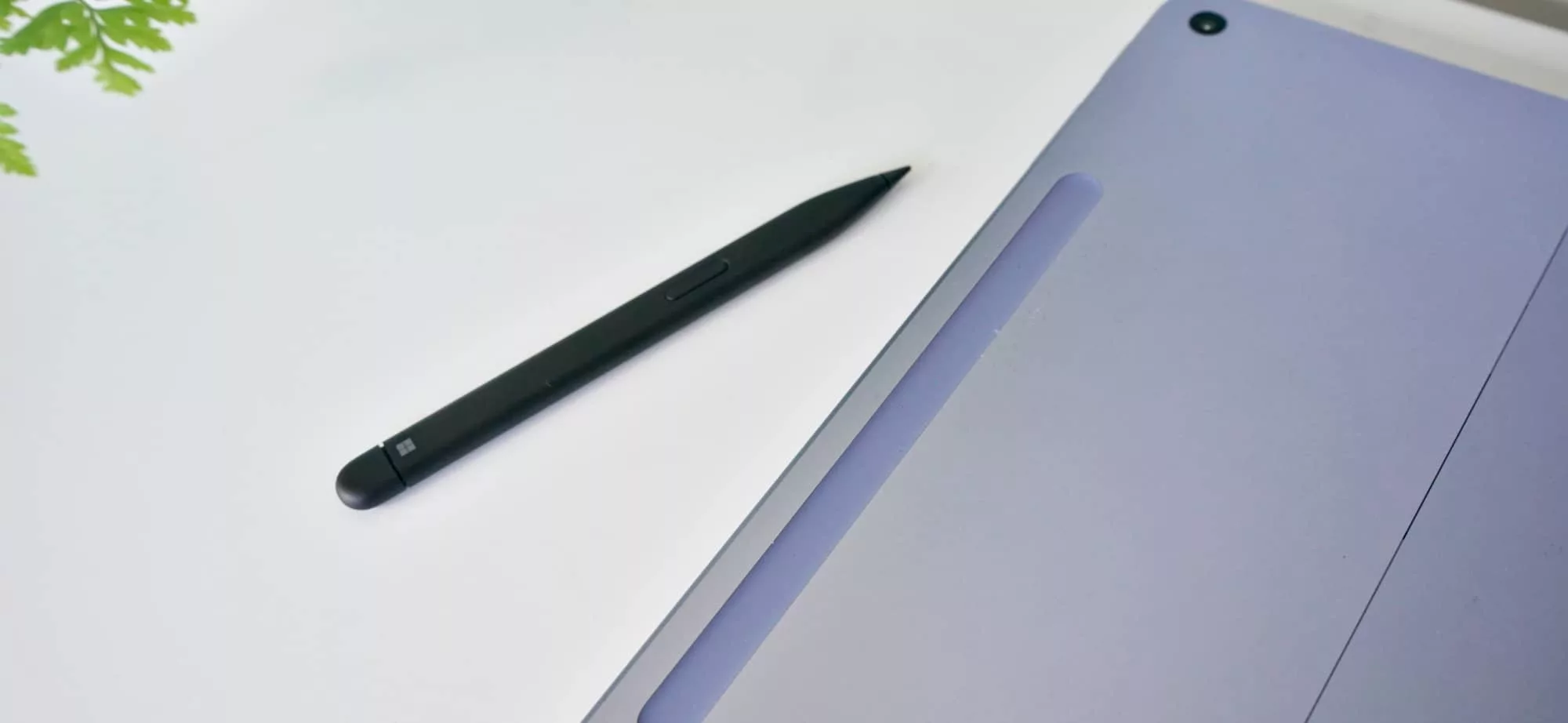
Another AI PC
Outside of the hardware, the other main features possibly worth checking out relate to AI. Doesn’t everything these days?
Copilot is a part of that, complete with the Copilot key introduced last year, as is AI photo editing, Copilot writing assistance, and generally some features you may or may not use. We didn’t.
Performance
Working out how to use the Surface Pro 12 inch isn’t hard, and basically means you’ll probably want to buy the keyboard and stylus to make it work better.
And good news, you can even log in to the tablet using the facial security system that is Windows Hello all too easily.
All that’s left is to put the Surface through its paces and see how well it handles life and the apps we throw at it.
With a different variation of Qualcomm’s Snapdragon chip for PCs, you’ll find more than acceptable performance for most of what you’ll throw at it, but it’s by no means comparable to other laptops, even some from last year’s Surface Laptop.
Comparing the Surface Pro 12 against other recent laptops, we quickly find the hardware performance isn’t quite where it should be.
It’s when you look deeper, however, you quickly get an idea as to why.
We’ve seen different Snapdragon chips for the past year in PCs, and this year’s Snapdragon Plus is clearly not the same as the Snapdragon Elite used in other laptops. It’s fine only a little slower for the CPU, but the graphics side of thing shows the Snapdragon Plus is less like its namesake, and more like a “less”.
Battery
As with all laptops and tablets, battery life will depend on what you plan on doing with the gadget. For the Surface Pro 12, we found a battery life of around 6 to 10 hours, which is about par for the course for our uses, writing and browsing and generally just using a computer through the course of a regular day.
That should give you a decent day of battery life, though use the tablet a little less and you may see more.
Our real-world battery test is normally accompanied by a benchmark, but running the Surface through PC Mark’s battery test produced errors. As such, you might just need to be guided by Microsoft’s suggestion that. the Surface Pro 12 can hit at most 16 hours of local video playback or up to 12 of web usage.
Real-world mixed usage of around 6 to 10 hours seems spot on based on those expectations.
The good news is that the two USB-C ports on the side means you shouldn’t have too much trouble recharging the Surface Pro 12 inch. The bad news, however, is that Microsoft’s lack of an included power supply makes that charging more annoying.
It’s very much a case of BYO here, and sadly, your phone’s charging brick probably won’t cut it. You’ll want around a 30W charger, so consider grabbing a compact GaN charger to make your life a lot easier overall.
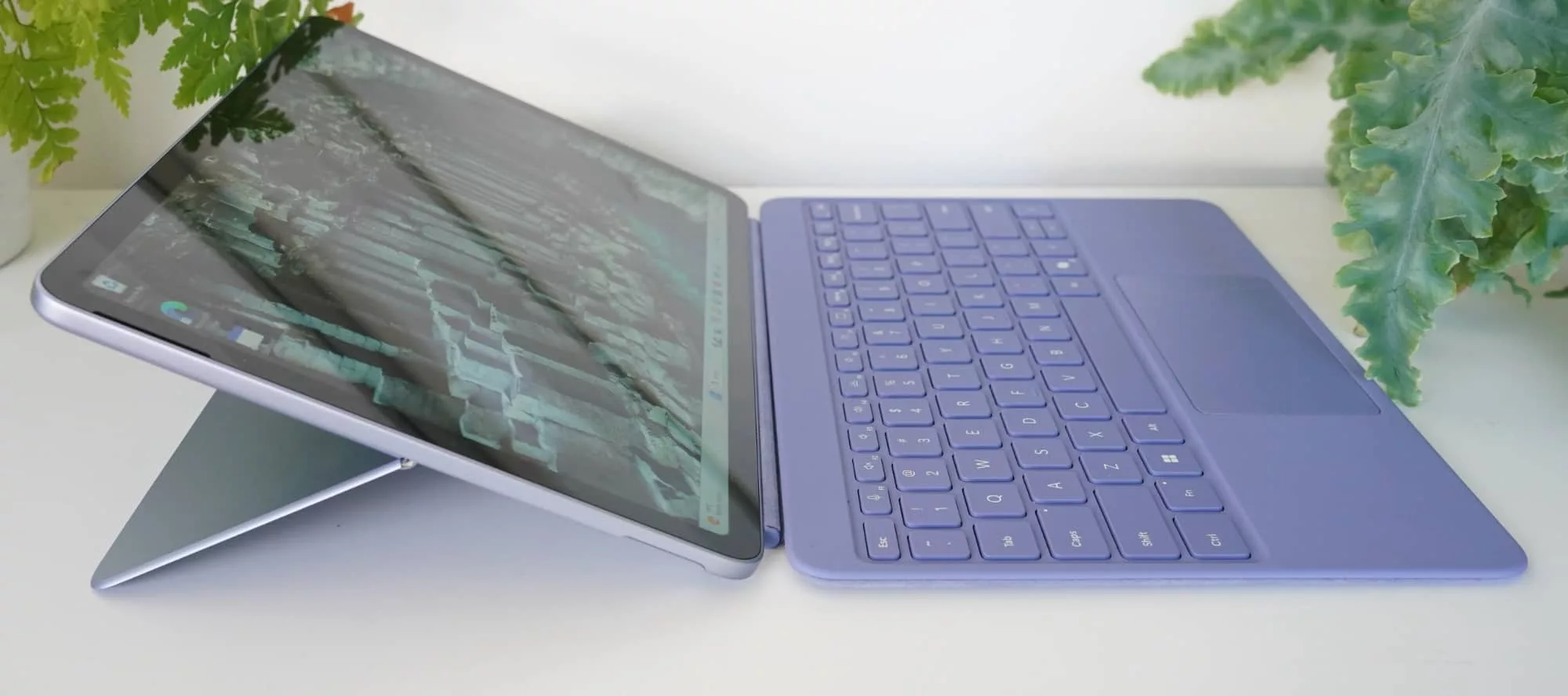
Value
Like the battery, the price isn’t terrible, either. While our Surface Pro 12 inch review unit was closer to the $1699 mark, the whole range actually kicks in at $1499, with the main difference between these versions being colour and storage, 256GB for the less expensive model and twice the amount (512GB) for the more expensive generation.
Going from price and specs alone, by itself, the price of the Surface Pro 12 inch isn’t bad, managing to beat the starting price of its 13 inch sibling by a reasonable amount.
While the Surface Pro 12 starts at $1499 with 256GB, the 13 inch model starts at $2199 in Australia with 512GB, a difference of around $700 for 512GB and a bigger screen. Comparing apples with apples, the $1699 price point means there’s a $500 price difference for a bigger screen and twice the storage.
What needs work?
The problem with the Surface Pro isn’t how it’s designed, or even how it performs. Both of those are quite nice.
No, it’s really how stingy Microsoft has been with accessories, even if they’re more necessary than accessory.
Take the power plug, which is actually an optional extra for Microsoft’s Surface. That’s a choice even Apple hasn’t taken, but Microsoft has, asking for $90 for a 45W USB-C wall charger. You could easily pick up one by any other third-party company with more power if needed, but the fact that Microsoft has ditched the very thing you need to charge this tablet is mind-boggling.
Then there’s the keyboard, which is another optional extra, for $275 in Australia, or with the Slim Pen on the back, which adds another $180 for a total of $455.
Basically, it means that in order to get the full Surface Pro package we reviewed, you’re not spending $1699, but just a little shy of $2200.
Over $2K for a tablet that’s under-powered when compared to the other Surface models doesn’t feel right.
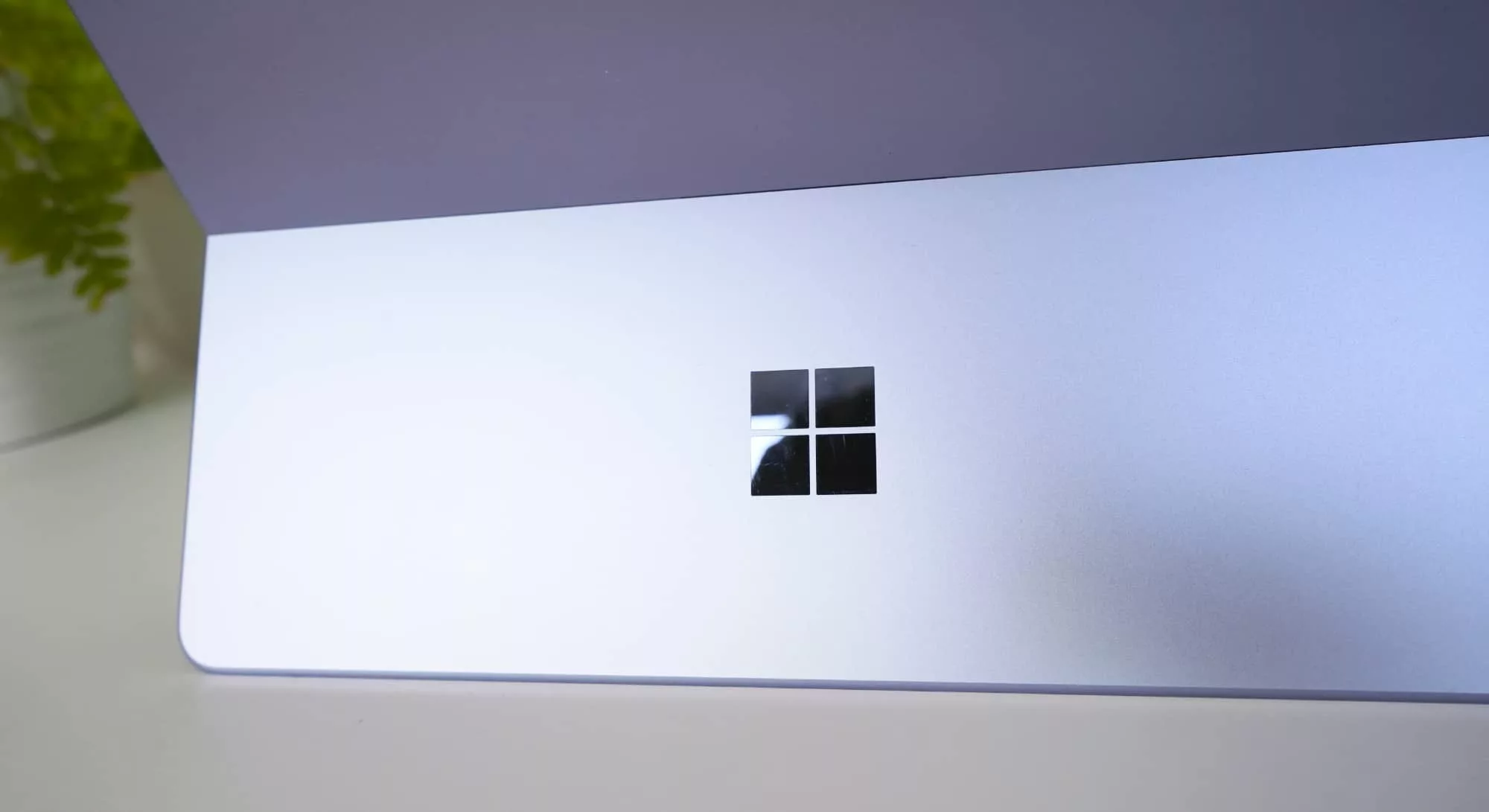
In fact, what it feels a little like Microsoft is taking the mickey here. Not including the keyboard or stylus is awkward enough, but pretty consistent for Surface. But skipping out on the power supply is just plain weird, and signals an era where you’re really buying the most stripped down lean edition of a computer you can think of. Pairing the computer with a lower performing chip doesn’t help it, either, nor does the surprising lack of a 3.5mm port.
The whole thing just feels like it needs a little more: a better processor in-line with what the 13 inch Surface Pro gets, a power supply with the laptop, and maybe a 3.5mm headset jack.
That last one surprised us, too. We looked several times thinking it was an error on our part, but no, Microsoft has removed the 3.5mm headset jack you can find on pretty much every laptop.
Thinking like a tablet, the removal makes sense, and you only need to look at an iPad Air or iPad Pro to see why. That said, the Surface Pro 12 inch is still a laptop, so it’s a touch surprising to see the 3.5mm port go and for Microsoft to not bother including a converter for that fact.
When you combine this omission with everything else, the properly portable Surface Pro 12 reads more as no frills than no problems.

Final thoughts (TLDR)
Microsoft’s most portable tablet in ages, the Surface Pro 12 has size and design working for it. The look is smart and the smaller size makes it an obvious inclusion to take with you.
It’s a laptop you can take in small luggage, or even just grab to go. Carry your coffee and computer, and you’re good. The value on the Surface Pro 12 isn’t bad, either, but it could be better. Frankly, given the lack of a power supply, it probably should be.
If what you’re after is a properly portable Windows PC, the Surface Pro 12 fits the bill. Just be prepared to spend for it, because while the initial sub-$2K price suggests it’s a good value, it’s only complete once you spend over.
